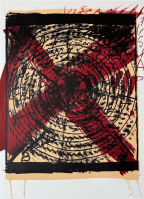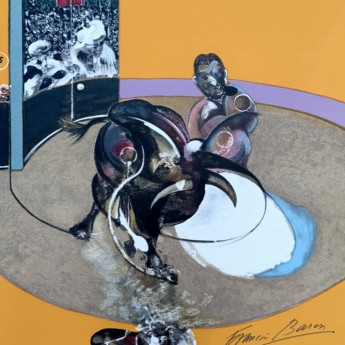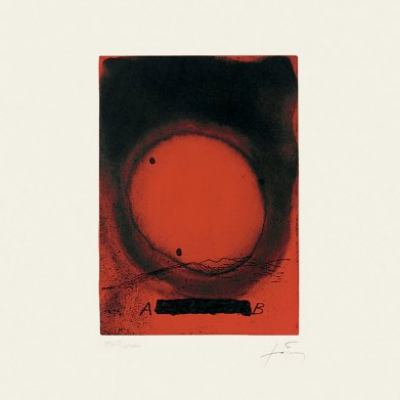
Details
Artist
Styles
Lithograph, signed by hand, numbered // Antoni Tàpies’ Cannage, a lithograph from 1984, presents a hauntingly abstract composition that merges texture with ephemeral forms. The piece is dominated by a soft, smoky haze that envelops the surface, with minimalistic, almost calligraphic lines sketched across it. On the left, a faint grid pattern emerges, resembling woven cane or mesh, evoking the title “Cannage.” This pattern contrasts sharply with the organic shapes on the right, creating a sense of duality between structure and fluidity. The restrained color palette emphasizes Tàpies' interest in texture and materiality, reflecting his exploration of the physical and the transient. Hand-signed and numbered, this print encapsulates Tàpies' fascination with the tactile and the ambiguous.
Cannage, 1984
form
Medium
Size
76 x 105 cm
- Inches
- Centimeters
Edition
Price
- USD
- EUR
- GBP
Details
Artist
Styles
Lithograph, signed by hand, numbered // Antoni Tàpies’ Cannage, a lithograph from 1984, presents a hauntingly abstract composition that merges texture with ephemeral forms. The piece is dominated by a soft, smoky haze that envelops the surface, with minimalistic, almost calligraphic lines sketched across it. On the left, a faint grid pattern emerges, resembling woven cane or mesh, evoking the title “Cannage.” This pattern contrasts sharply with the organic shapes on the right, creating a sense of duality between structure and fluidity. The restrained color palette emphasizes Tàpies' interest in texture and materiality, reflecting his exploration of the physical and the transient. Hand-signed and numbered, this print encapsulates Tàpies' fascination with the tactile and the ambiguous.
- Recently Added
- Price (low-high )
- Price (high-low )
- Year (low-high )
- Year (high-low )
Antoni Tapies
Primer Congreso Nacional De Neuropedriatria, 1982
Limited Edition Print
Etching
EUR 1,875
What is Arte Povera?
A movement and style in art that originated in Italy during the 1960s. It integrates elements of minimalism, performance art, and conceptual art by using everyday or seemingly worthless materials, such as newspapers, stones, or rags. The goal was to challenge and subvert the commercialization of art.

























































































































